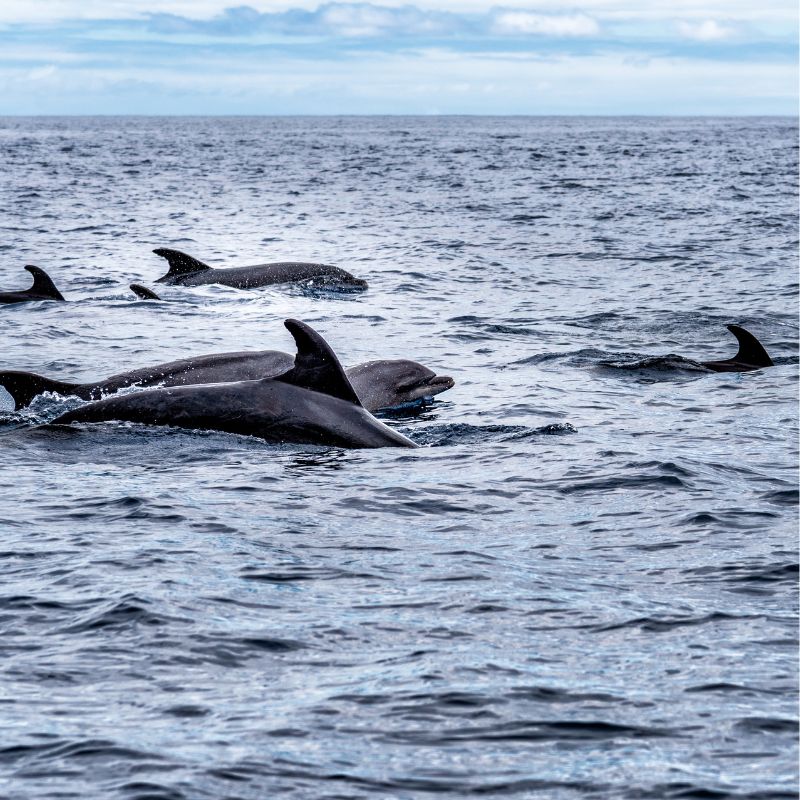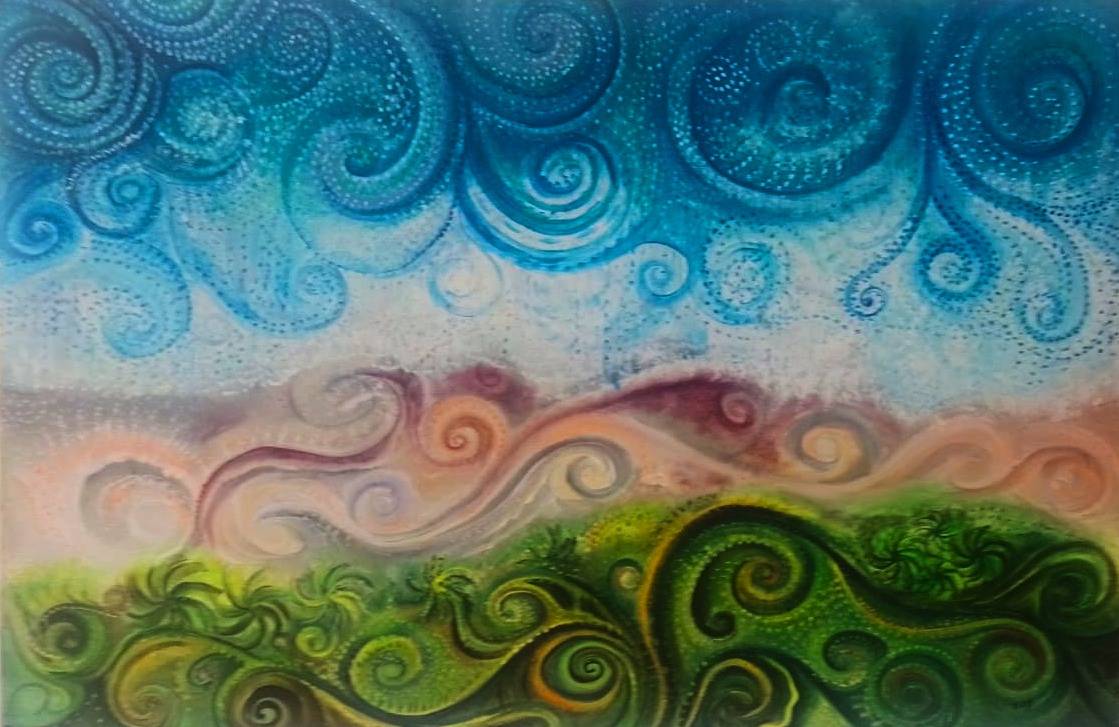Watching whales in Costa Rica is relatively easy if you are at the right time and in the right place, of course. However, do you know when that is? Costa Rica has not only two oceans but different regions that work as different habitats for different species. Let us tell you a bit about where to find them and at what time of year.

To see whales in Costa Rica is entirely possible, as this area is the gathering place for humpbacks from both hemispheres. As they play an essential role in the tourism industry in a few country regions, many tours will give you this fantastic experience during the nine months when whales are around our coastlines.
With shorelines on the Caribbean Sea and the Pacific Ocean, Costa Rica has more maritime territory with 221,902 Mi2 (574,725 Km2) than terrestrial space, which is merely 19,729 Mi2 (51,100 Km2).
The Pacific Coast is marked by numerous gulfs, peninsulas, small isles, islands, and points. In comparison, the east coast is completely uniform except for the southern areas, where you find Puerto Viejo, Cahuita, and Manzanillo.
These irregularities on our Pacific shore are perfect for the whales to be seen. Their waters are calmer, and it is easier to spot them on the Pacific coast.
The most visible of all whales worldwide is the magnificent Humpback Whale, as they remain mostly all the time closer to the surface.
In Costa Rica, we have pseudo orcas, pilot whales, and others that have been seen close to our coast. However, the acrobat of the ocean is the humpback whale.
They jump, float, come near, and play, and if your time in Costa Rica is correct and you are lucky, you may see them bounce and dance near the surface.
Let’s talk about watching whales in Costa Rica, and their impressive migration.

The North Pacific Humpback Whales have the most extended migration path of any animal on the planet. 5,160 miles (8,300 km). They move from the icy North Pole waters, where they get fed, to the much warmer tropical and subtropical ocean waters that range from northern California to Central America.
The southern hemisphere population is more significant, with around 6,000 whales. They cover thousands of miles from Antarctica to the more heated seas of Central America.
These yearly trips are well known and tracked. However, the reasons behind the places that host the whales during their winters are still unknown.
Some of the most common hypotheses around this are:
- A remaining behavior from when the ocean basins were smaller and feeding and wintering regions were closer.
- The maximization of energy resources by spending winter in warmer waters.
- Growth and possible chances of survival of calves (offspring) increase in warm, protected waters.
- Escape of killer whales (Orcinus orca) depredation at tropical latitudes.
The fact is that they breed and sometimes give birth in these areas, and usually, when you spot them in Costa Rica, you will watch a calf accompanying the massive mammal.
When they arrive in Costa Rica, they will get together and use their time in the tropics to find suitable coupling mates, give birth, and allow the newborns to grow stronger and wiser for the trip back to the cold waters where they feed.

The warm waters are considered excellent for the development of baby whales, even if they are already 4-5 m long (13–16 feet) and can scale up to 1 ton (907 kg) when they are born. Many predators will be after it because, as big as it may seem, it is immature and playful and, at times, can get out of its mother’s immediate sight.
Mother and calf surface to breathe together.
Now, in Costa Rica
There are two separate humpback whale migrations, and they happen at varying times of year but never overlap, as seemingly they are escaping from the coldest months of their feeding areas.
· Southern humpback whales start to show up in late July and remain until early November.
· Northern humpbacks ordinarily begin to come to Costa Rica in December and may be viewed until late March or early April.
And of course, this is unique, as there is a chance to see whales nine out of twelve months of the year.
They don’t bring the same number of individuals, so please keep reading to get the most information from this post.

Fast Facts about the whales that come to the coasts of Costa Rica
- The South Pole migration has the most significant number of whales, and the peak season is from August to October. Through this time of year, your probabilities of observing humpback whales are pretty good.
- The majority of the Alaska and California whales spend their winter in Hawaii, Japan, and other places to the north, so there are fewer in Costa Rica. Thus, it is harder to watch humpbacks from December to April, but not wholly impossible.
- Whales are occasionally detected on catamaran, kayaking, and snorkeling tours, especially from late December to the beginning of February. Still, there is more chance to see sea turtles, sea birds, and dolphins at this time of year.
- April to mid-July are the months when, most likely, you won’t see whales at all on our coasts.
- Humpbacks from the northern Atlantic Ocean also move close to Costa Rica (Caribbean Coast) but are not seen significantly, so whale watching isn’t as successful as on the Pacific side.
- Humpbacks make magnificent displays with their tails and huge fins when they jump out of the water. Be ready for it!
- Males fight for females by singing songs, producing complex bubble performances, and bodily repelling one another.
- A baby comes 11 months after coupling, and calves linger by their mother’s side for up to a year. They are very affectionate with each other, and the mother can sometimes be jealous of the environment as predators will try to hunt the babies.
Where to watch, what?
Approximately 25 species of whales, dolphins, and manatees have been seen on our coastlines, with different species from coast to coast.
Osa Peninsula, Golfo Dulce, Drake Bay, and Isla del Caño.
These maritime mammals come in all sorts of groups, from lonely female whales to the super schools of dolphins around the Osa Peninsula.
What You Can See:
Humpback Whales
Bottlenose Dolphins,
Pseudo Orca Whales
Pilot Whales
Spinner Dolphins
Spotted Dolphins
Common Dolphins
Rough-Toothed Dolphins
When: The primary season to watch whales goes from late July to early October.
The whales you see in this region come from the Southern Hemisphere, although some Northern Humpbacks show off from late December to February.
Experiences:
The best idea is to take the tours from Drake Bay to Caño Island, as the water between the bay and the island is usually populated with pods of dolphins and whales.

Marino Ballena National Park (Central-South Pacific)
What You Can See:
Humpback Whales
Pseudo-Orca Whales
Pilot Whales
Spinner Dolphins
Spotted Dolphins
Common Dolphins
Bottlenose Dolphins
When: The migratory humpback whales can be found in the area from late July to October and late December to early March.
The Experiences: Marino Ballena National Park strictly monitors all whale watching in the region to guarantee that the tours are safe and enjoyable yet sustainable, respecting a logical distance not to disturb the cetaceans.
Trips leave the national park every day, traveling out to observe the fantastic park’s whale tail land formation and then going to the usual places where these marine mammals hang around.
Humpback whales are recognized to be especially active in this area, sometimes in larger groups.

South Caribbean Coast
What You Can See:
Humpback whales (very rare)
Bottlenose Dolphins
When: To watch dolphins, you can go offshore any time of year. The humpback whales that rarely show off in this area come from the north, talking from late December to February.
The Experiences:
The Caribbean coast has an outstanding bottlenose dolphin group that is easily spotted when you go snorkeling.
Although it is not part of Costa Rica, an area to almost guarantee dolphins’ sightings is the Archipelago of Bocas del Toro, where there is even a spot called Dolphin’s Bay.
Tortuguero Canals (North Caribbean)
It is a rare sighting, but dolphins can be seen in the Tortuguero River, closer to its exit to the sea.
They follow the boats that go to the airport at times.
What to see:
Bottlenosed Dolphins
Guanacaste (North Pacific Coast)
What You Can See:
Humpback Whales
Pilot Whales
False Orcas
Orcas (rare)
Spinner Dolphins
Bottlenose Dolphins
Common Dolphins
When: At least three species of dolphin can be located during the year.
The most suitable time to see whales and dolphins is from late July to October and late December to late March.
Experiences:
There are plenty of chances to see them on the catamaran sunset sailing tours, on snorkeling trips, and even, if lucky, on a kayak or paddleboard, as they move pretty slowly in these regions.

Planning your trip to Costa Rica to see the marine wildlife as well?
To conclude this guideline to watch whales in Costa Rica, if that is your main interest, the best time is about to get here, in September!
If you want to see whales, dolphins and other natural wonders in Costa Rica, send me a note with your questions to writer@olgasaenz.com maybe I’ll be able to give a couple answers 😉
Written by Olga Sáenz, painter and copywriter
Reference:
Beach Town Travel. (2023, May 27). Where to See Whales, Dolphins, and Manatees in Costa Rica. Beachtowntravel.com; Las Catalinas. https://theblog.beachtowntravel.com/where-to-see-whales-dolphins-and-manatees-in-costa-rica
